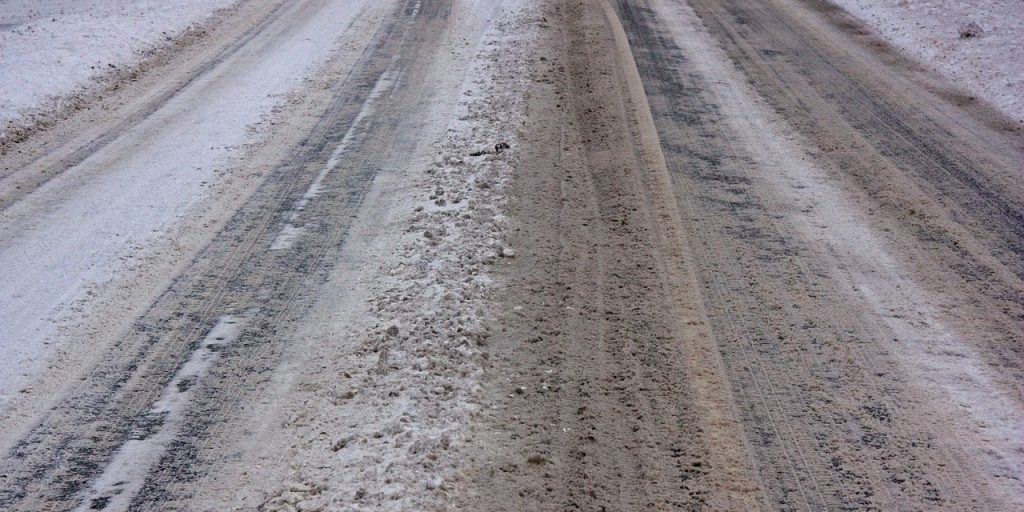Expediting the reduction of road salt use in America
The use of road salt, the most common deicer used in winter maintenance, causes serious environmental impacts to our water, soil, air and prematurely destroys transportation system infrastructure in states that require winter roadway upkeep. The environment is revealing critical warning symptoms signaling that action must be taken quickly to cease and hopefully reverse the damage.
Current solutions and technology exist to reduce salt use but require a national effort to change past practices and attitudes. Ample research is available proving damage caused by road salt, but the U.S. has not collectively focused its efforts to reduce usage. Rather, we have ineffectively left this up to states to try and independently resolve. The result is continuing active contamination in many areas that utilize road salt.
This is neither an insurmountable, nor unprecedented, challenge. High sulfur air polluting emissions in the 1960s and 1970s led to the death of innumerable trees from acid rain and ozone depletion from the use of chlorofluorocarbons in the 1980s and 1990s caused a massive hole in the stratosphere over Antarctica. Like the Green Movement of the past fifteen years, it is within this country’s control to recognize the problem of using road salt, understand recommendations made from available research regarding ways to cease its progression and act.
Road salt use in the United States in the late 1930s used 5,000 tons of salt versus the approximately 20 million tons of road salt broadcast annually on roads and bridges in the United States according to The Cary Institute of Ecosystem Studies’ 2010 article, Road salt: moving toward the solution.
Thorough research supports the need to reduce the amount of road salt applied. This research proves that many freshwater bodies, ground water sources, and soils are already contaminated, and provides alternative and best application standards in road salt usage.
A large body of biological data available provides proof of the contamination to ecosystems from road salt. Other research highlights the damage to infrastructure costs approximately $22 billion to taxpayers annually. The study underscores existing current best management practices exist regarding operations, deicing alternatives and new innovations in chemical and technological means to reduce salt.
Roadblocks to reduce salt impacts
States experiencing seasonal snow events operate with independent best practice standards, have different training programs, and have few rules regulating the amount of salt that contractors and municipalities can use. In addition, extremely few winter maintenance certification programs exist.
There is no federal agency serving as a central resource for states to look to for proper standards. There is no central body of regulatory and policy knowledge that can be handed down to states in the form of baseline laws and procedures under which to operate. Eclectic winter maintenance practiced by individual states proves the need for consistent, centralized administrative supervision.
What change is needed to reduce salt use
- Foremost, acceptance that environmental contamination is occurring from road salt use requiring action by responsible officials, winter maintenance professionals, and change to public concepts regarding how to provide safe roads.
- Identify a lead federal agency to aggregate winter maintenance practice standards to professionalize winter
- Incentivizing the use of alternative deicers, new equipment and technology, and adopting best industry practices, while requiring that percentages of budgets be utilized for these areas before road salt permit applications are
- Encourage pilot programs at the local and county levels with federal and state grants to properly equip maintenance fleets with technology and alternatives to reduce road
- Professionalize winter maintenance activities by requiring specific education and
- Focus new policy and legislation at the federal level to include incentivizing private contractors and setting limited liability standards that states can adopt to protect professionals from lawsuits when complying with federal
- Educate the public regarding the injurious effects of road salt through a public campaign, much like the green movement, to get the nation to accept and act on the notion that using road salt is ultimately contaminating our environment and destroying infrastructure
- Finally, demonstrating concern for the United States’ fresh water and other resources now is a responsible action for the benefit of future
Following these recommendations will expedite the reduction of road salt use in the United States, lessening future contamination to the environment while saving taxpayers billions of dollars every year.
Charles Lehn is Parks and Facilities Manager in Champlin, Minn. You can reach him at [email protected].




















While WSDOT’s significant research in this area suggests far less environmental impact than you reference, few would argue that less salt is good, yet you offer no alternatives. With many years experience in this area, the alternatives available leave road users at considerably greater risk. Anti-icers only work in a small temperature range and have some safety issues as well. And that’s aside from the significantly greater costs.